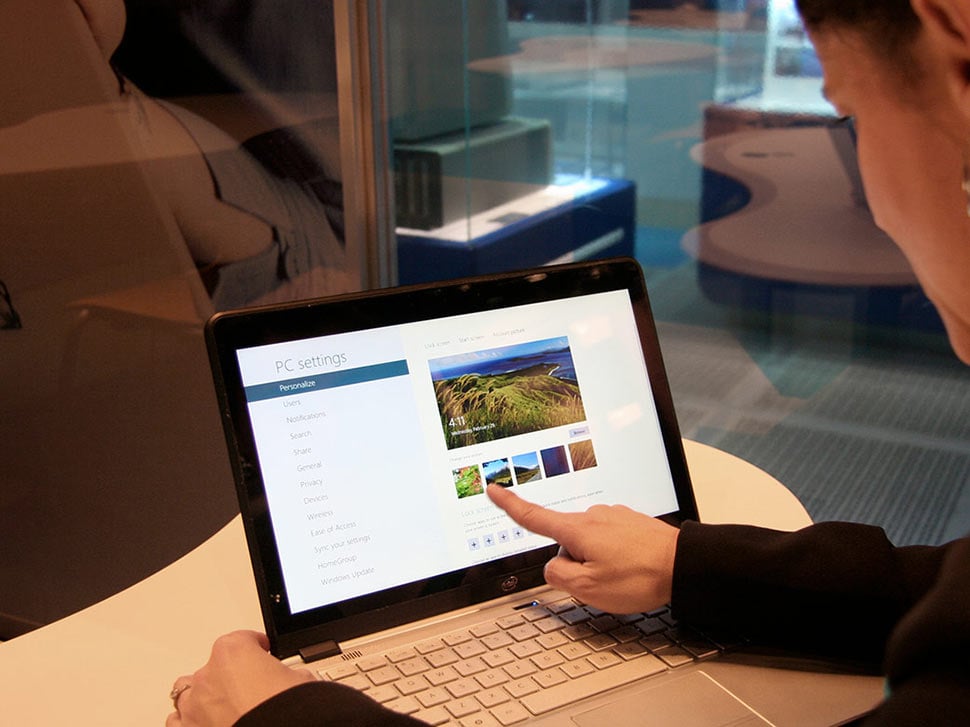How Does User Testing Improve Quality and Reduce Business Risk?
 Photo from Intel Free Press.
Photo from Intel Free Press.
In any medium, across any industry, quality control is a critical aspect of the delivery process.
When writing a resume, proofreading uncovers any spelling, formatting, or grammatical errors. In construction, inspections are conducted to ensure safety and stability. Across all work, follow-up is key once the first pass has been completed — and user experience design is no different.
User testing is the quality control effort that determines how effectively users are able to interact with the system. When creating an app or a website, content is organized based on in-depth research from subject matter experts, workflows are generated by professionals whose careers revolve around creating intuitive experiences, and interactions are designed with the latest paradigms in mind.
Nevertheless, the first design is never going to be perfect. Even if “perfect” is not the ultimate goal, an effective user experience inherently drives business outcomes for any channel or software application.
How does user testing work?
User testing provides an opportunity to get real users interacting with the system. Participants are observed completing tasks and are encouraged to speak out loud about what they are thinking and doing. Through this process, we are able to identify pathways that are not as clear as originally believed, uncover organization of content that confuses users, and unveil a myriad of other issues that could potentially reduce user conversion and retention. If you want to get into the nitty gritty of the user testing process, hop over to this user testing article.
Improve the quality of your product
After each round of user testing, you start to see patterns across the participant sessions and examine them to understand issues that need to be improved in the experience. These could be anything: unclear icons, distaste for a specific element, placement of buttons, or redesigns of workflows. These may seem like smaller issues, but they can add up to abandoned carts, incomplete transactions, and uninstalled apps.
Once you identify these patterns and evaluate them for severity, decisions are made as to which items you will prioritize and address in the experience before the next round of testing. The process is eye opening for every member of the team and allows for quality to be redefined (and challenged) throughout the process by the target audience, not the internal team.
Improving the experience through user testing can make a big difference to your bottomline.
According to a recent study conducted by Forrester, a great user experience can increase conversion rates by 200% to 400%. Think about those numbers applied to your business.
How does user testing reduce business risk?
The impact of a well-tested prototype or product has a direct correlation with your business investment in terms of time and money.
Time is one of our most valuable assets. Whether it’s time-to-market or seasonality, timing is everything. Designing and developing software can be costly. Without proper user testing you could end up funding mistakes, potentially adding up to more of an investment than the initial upfront cost for user testing. Forbes discusses the positive impact of a strong user experience on your overall project budget, “...every dollar invested in UX returns $10 to $100, and correcting the problem from the start is most cost effective.”
Before you assume that your audience “wants” or “needs” a feature, try testing your ideas with an interactive prototype that can be created faster and at a lower-cost than a fully-functional release.
Be a user testing champion
Every digital experience that goes through user testing has a leg up on those that don’t. This critical process ensures that assumptions have been checked and users will be able to check out, pay their bill, and continue to interact with your investment.
If you’re looking for some help with quality user testing of your product, we’re happy to collaborate and take it to the next level. Give us a call or drop a line.

